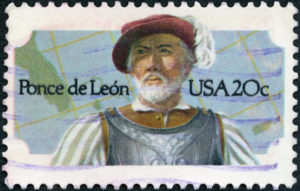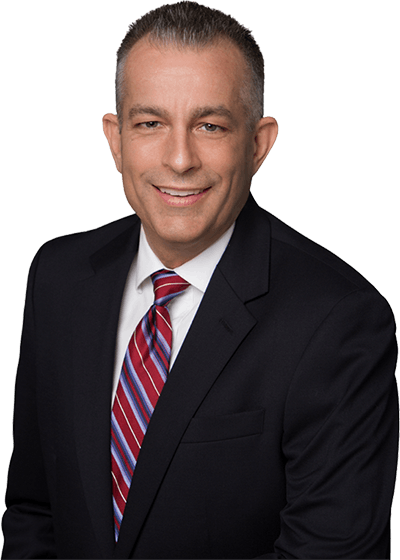The First Coast
St. Johns, Duval, Clay, Baker and Nassau
All five of the above counties of Northeast Florida are part of “First Coast” Territory. Originally colonized by Europeans, the First Coast runs along the northern portion of Florida’s Atlantic Coast, housing the Jacksonville metropolitan area (JAX).
In 1983, the JAX Chamber of Commerce employed the William Cook Advertising Agency in order to launch a new marketing campaign for the major metropolitan area. It was during this campaign that the nickname “Florida’s First Coast” was coined. The First Coast Anthem was introduced at the Gator Bowl later on that same year.
Similar to the “Space Coast” and the “Gold Coast”, the “First Coast” references northeast Florida’s geography and historical standing as the first location in the continental U.S. to experience contact and settlement with Europeans. It is suspected that Juan Ponce de León landed in the area in 1513, preceding the founding of Fort Caroline in 1664. The oldest continuously inhabited European establishment in the continental U.S., St. Augustine, is also included in the “First Coast” and was founded in 1565 by the Spanish.
Increasingly popular throughout the 1980’s, almost 800 businesses and organizations in 2002 were utilizing “First Coast” in their names. Even JAX ABC and NBC affiliates were branding their operations as “First Coast News.”
Victorian-era Architecture and Deep History

Shaped by its rich history, the “First Coast” prides itself on diversity from sprawling Victorian-era mansions to Southbank condominium skyscrapers. There is something for everyone: bustling city life, laid back beach vibes, quaint village life, rich historical roots and epic dining opportunities – there is no shortage of memorable experiences for everyone.
It is not without deep appreciation of the historical past and proud continuance of valued customs and long standing traditions that the First Coast plunges forward in innovation, design and business, always with a progressive vision for the future. Longtime locals mingle with transient newcomers amidst a perfect blend of rural/metropolitan flair, effortlessly abiding by the First Coast’s “Live-Work-Play” philosophy.
Juan Ponce de Leon
The First Coast was once considered “no man’s land” just prior to the arrival of Juan Ponce de Leon in 1513. In fact, most of the state was inhabited by indigenous tribes occupying various settlements along the state’s multiple waterways. Archaeologists in Atlantic Beach have recovered some of the oldest pottery in the country. Experts believe it to be from 2500 BC. These same experts also expect that the First Coast hosted the first year-round North American indigenous settlement. Eventually, the Spanish interrupted the tribal culture, claiming the land for Spain via hard-fought battles. In 1564, however, the French Huguenots constructed their colony at Fort Caroline. Unfortunately for them, this life was short-lived thanks to the Spanish who overtook Fort Caroline, occupying it for 100+ years.
Spain eventually vacated Fort Caroline, offering it to the Brits after the Seven Years’ War. The British settlers were ahead of their time, establishing new road systems and cultivating indigo and sugar cane crops, leading to a thriving economy. The rollercoaster continued as the Brits soon returned the territory to Spain due to a waning period, at which point the United States claimed the area courtesy of the 1819 Adams-Onis Treaty. The First Coast went for $5 million and the Spanish were granted Western boundaries.
A Winter Destination
Americans established townships in Baker, Clay and Duval counties, reconstructing the First Coast post-Civil War style, enabling them to capitalize on the local weather and beaches. Soon, the First Coast became a popular winter destination frequented by affluent visitors, ushering in the Gilded Age. Boardwalks, dance pavilions, the local rail system and affordable labor soon marked the First Coast’s 20th century.
World War One greatly stimulated the local economy as a natural result of strong military presence. Due to 19th century harbor upgrades and improvements, The First Coast assumed a new identity as a major civilian and military deep-water port, much of which remains today.

Today, with 90+ miles of crystal-clear, blue water Atlantic beaches, perfectly complemented by the gorgeous St. Johns River, The First Coast is also home to 131+ miles of city, state & federal parks and preserves. Rich in multicultural and racial diversity, over 1.4 million residents call The First Coast “home” and roughly 750,000 employees participate in the local labor force. Your Home Sold Guaranteed Realty - Phil Aitken Home Team is privileged to serve this area.
Development and Commerce
The First Coast has become a major logistics hub. It offers access to four major rail lines, four maritime terminals, two interstate highways and two deep-water ports. These collectively work together to accommodate Jacksonville. Jacksonville is the 12th most populous and largest city by land in the Continental United States. This unique and impressive infrastructure helps to reduce residential overcrowding.
The First Coast boasts three Fortune 500 companies, attracting a large population of diverse professionals. In addition, Northeast Florida enjoys a cost of living that is well below the nation’s average. Natural resources are preserved amidst a thriving, growing economy and 90+ miles of glorious beaches and shoreline. Residents are passionate about local sports teams and annual city-wide festivals. They appreciate the benefit of living near some of the finest healthcare establishments in the country. The First Coast is a burgeoning mecca of breweries, craft beers, food trucks and music entertainment. This makes Northeast Florida a magical place of general merriment and excitement. Simply put: people LOVE living here!
Art connoisseurs glow at the opportunity to take in new exhibits at the Cummer Museum of Art & Gardens. Eager shoppers enjoy leisure weekends exploring some of the finest shops at St. Johns Town Center. Wherever your passions lie, The First Coast truly has something for everyone. Revisit the past, enjoy the present and look forward to the future. You’ll find great pleasure and anticipation here in glorious Northeast Florida.

